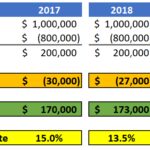
If you are preparing the journal or ledger manually, you or your accountant will need to go through each of the accounts individually. The assets are categorized into current assets and fixed assets, and are typically reported on the left hand side of your company’s balance sheet. Say you own a publishing house, Martin & Co., and purchased 20kg of paper on cash at $20 per kg on December 1, definition of operating income and net sales 2020. Therefore, the following is the journal and ledger that you need to record into books for such a transaction.

Types of General Ledger Accounts
But, you can refer to the related subsidiary account if you need to check any detail regarding the sales made to a specific customer. This software ensures the general ledger will sort all transactions through the proper accounts to create accurate financial records. With QuickBooks for Small Businesses you can connect all of your business accounts seamlessly and track all expenses in one place. Where once all journal entries and general ledger accounts were manually recorded by hand, now technology can automate the accounting process. Quality accounting systems have become a staple for small businesses everywhere, as they are essential to the management of accounts and organized record keeping.
What’s included in an accounting ledger
- It’s the same order in which you’d encounter them if you were to read through the balance sheet and income statement.
- For example, your sales ledger contains information like tax information, invoice number, goods sold, date of sale, and customer details.
- Therefore, everyone within the company network can access the ledger at any point and make a personal copy of the ledger, making it a self-regulated system.
- A purchases ledger, or creditors ledger, records all transactions relating to purchases that a business entity makes.
- For a small business the most common way to split the ledger is into four subledgers.
Unlike journal where transactions are recorded in chronological order as they occur, you record transactions in the ledger by classifying them under various account heads to which they relate. Having a general ledger may help the audit run smoothly, because you can easily verify information if various accounting items are classified and recorded accurately. As a result, general ledger accounting also helps you to spot material misstatements with regard to various accounts. A purchases ledger helps you to keep a track of the purchases your business makes, so you can make sure that you have enough purchases for the smooth manufacturing of the products.
A general ledger contains all the ledger accounts outside of the sales and purchases accounts. Therefore, you need to prepare various sub-ledgers providing the requisite details to prepare a general ledger. As a result, each transaction of your business takes place in such a way that this equality between the two sides of the accounting equation is always maintained. That is, at any point in time, the resources or the assets of your business must equate to the claims of owners and outsiders. This is because owners and the outsiders are the ones who go in for providing such resources.
Double Entry Bookkeeping
He has been the CFO or controller of both small and medium sized companies and has run small businesses of his own. He has been a manager and an auditor with Deloitte, a big 4 accountancy firm, and holds a degree from Loughborough University. Revenue is the business’ income that is derived from the sales of its products and/or services. Revenue can include sales, interest, royalties, or any other fees the business collects vishay insurance dac from other individuals or businesses. Such an investigation helps you to avoid errors later, and, with an online accounting software like QuickBooks, such a comparison becomes a lot easier. Reconciliation of your general ledger helps you to ensure accuracy of the information contained in your general ledger accounts.
Double Entry Bookkeeping is here to provide you with free online information to help you learn and understand bookkeeping and introductory accounting. As the business grows and the number of accounting staff increases it is impractical to have only one ledger. In these circumstances it is common to split off sections of the main ledger into separate subledgers. The next line shows the headings used for each of the ledger accounting transaction entries. what is depreciation expense and how to calculate it For this reason the ledger is sometimes known as the book of final entry or the book of secondary entry.
General ledger accounting examples.
It provides a record of each financial transaction that takes place during the life of an operating company and holds account information that is needed to prepare the company’s financial statements. Transaction data is segregated, by type, into accounts for assets, liabilities, owners’ equity, revenues, and expenses. A general ledger is an accounting record that compiles every financial transaction of a firm to provide accurate entries for financial statements. The double-entry bookkeeping requires the balance sheet to ensure that the sum of its debit side is equal to the credit side total.
The double-entry bookkeeping method ensures that the general ledger of a business is always in balance — the way you might maintain your personal checkbook. Every entry of a financial transaction within account ledgers debits one account and credits another in the equal amount. So, if $1,000 was credited from the Assets account ledger, it would need to be debited to a different account ledger to represent the transaction.
Also, it is the primary source for generating the company’s trial balance and financial statements. The ledger’s accuracy is validated by a trial balance, which confirms that the sum of all debit accounts is equal to the sum of all credit accounts. The general ledger (GL) is the main ledger and contains all the accounts a business uses in its double entry bookkeeping system. The purpose of the general ledger book is to provide a permanent record of all financial transactions and balances classified by account. A general ledger is the foundation of a system employed by accountants to store and organize financial data used to create the firm’s financial statements.


